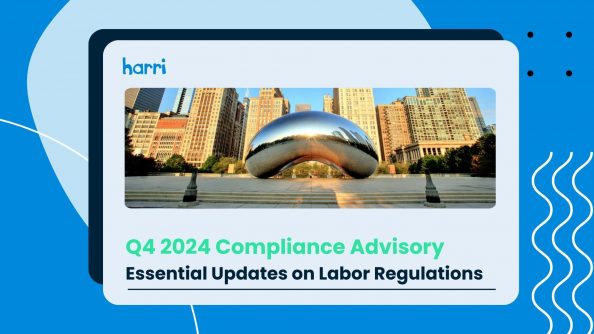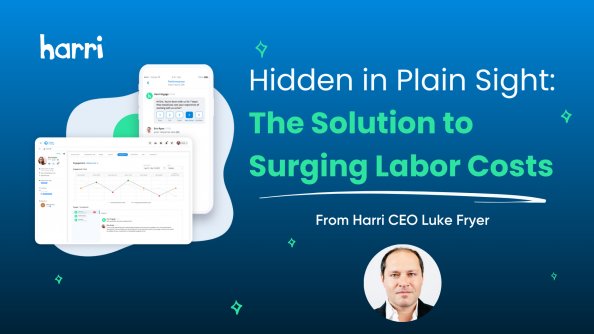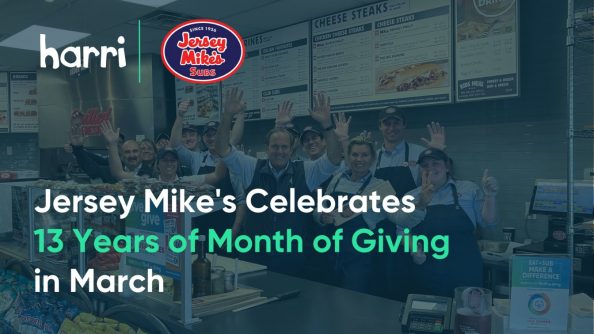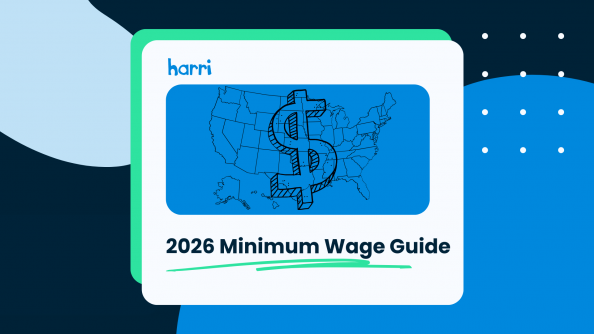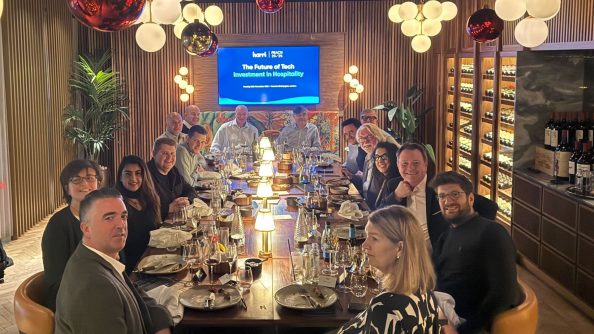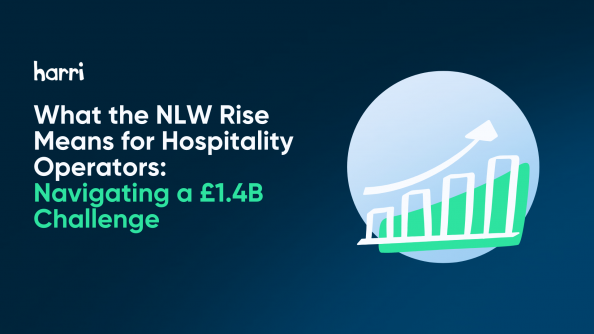What Factors Are Employees Looking for in a Restaurant or Food-Service Job? How to Attract Top Talent

- By Harri Insider Team | February 6, 2024
When was the last time you put yourself in the shoes of an employee? Most restaurant and hotel owners and managers might be a bit short-sighted when it comes to the ins and outs of attracting and hiring candidates, simply due to time limitations and how the process has rapidly evolved in recent years.
Try to look at things from the perspective of an employee and you’ll have a better sense of what prospective and current employees are looking for. A concerted effort to view labor from the eyes of an employee pieces together the puzzle of employee satisfaction for talent attraction and retention.
Harri’s platform helps streamline the food service hiring process and keep new additions in the fold. This is your inside look at how to hire employees with effective strategies that convince the most coveted candidates to join your team.

Understanding Employee Priorities in Restaurant and Food-Service Jobs
Business professionals often discuss the importance of a value proposition in capturing market share, but value proposition in the context of employment is also important. If you were to survey your employees, you may find that they desire more pay, flexible scheduling and opportunities for promotion.
The overarching theme of employee recruitment and retention is to align talent acquisition with the expectations of employees. There is no single factor that drives job choice in food service. Some employees are laser-focused on climbing the ladder to reach a management role. Some workers are primarily concerned with financial compensation. Others have family responsibilities that necessitate flexible scheduling. Foodservice hiring managers and business owners willing to invest the effort necessary to understand such factors maximize restaurant recruiting efforts while simultaneously bolstering retention.
With a majority of industry leaders concerned about ongoing staffing challenges, it’s more important than ever to fully understand what makes the difference between a long-term dedicated workforce versus employees regularly heading for the exits. Overall, employees value flexibility in scheduling within an industry that can be inherently stressful with “always on” hours. When it comes to long-term retention, mapping out career paths as early as the recruitment stage, and highlighting progression opportunities at performance reviews can help workers see a positive future in the business, according to the 2023 CGA and Harri report, based on survey data from hospitality workers.
Hospitality employees point to rigid work schedules and heavy workloads as the primary reasons why work has become unappealing. Though the desire for additional pay will always be present, it is work-hour inflexibility that creates frustration. While hourly wage is the primary factor that determines whether an employee will accept a job offer, flexibility ranks a close second in job-seeker consideration.
Competitive Pay and Benefits: More Than Just a Salary
Salaries and hourly wages are the primary motivation for working. Businesses that refuse to provide competitive pay might attract some new hires yet those additions are unlikely to last, ultimately leading to churn. Pay and benefits both play important parts in shaping job satisfaction and ongoing retention.
Stagnant pay is part of the reason why 42% of hospitality workers are considering transitioning to new roles. Job satisfaction levels have improved in the previous year, yet there is an ongoing labor shortage and a higher-than-desired turnover rate in both the U.S. and the UK.
Some hospitality businesses are hesitant to raise wages simply because doing so may require an increase in service/product pricing passed on to customers, ultimately leading to less foot traffic. While this is a difficult tradeoff for any business, it is worth analyzing quantitative metrics like turnover rate, time-to-hire and cost-to-hire when considering changes to your payment structure.
Flexible Scheduling: A Key Demand in Today’s Workforce
It wasn’t long ago when the labor market was tight enough to empower companies to set strict work hours with little-to-no leeway. As the employment market has shifted and the pandemic has forever changed the way customers and the workforce envision travel and hospitality, hotels and restaurants now understand the importance of flexible scheduling.
Give your employees more leeway in work hours and they’ll reciprocate the favor in the form of hard work and peer referrals when new positions open. Even ensuring something as simple as set working hours (for example, by blocking off school pick-up times on weekdays) has the potential to greatly improve employee satisfaction and retention, potentially to the point that those workers are not even tempted to look for another position.
A well-planned schedule optimized by intelligent scheduling software is one of the best ways to balance employee satisfaction with operational success.
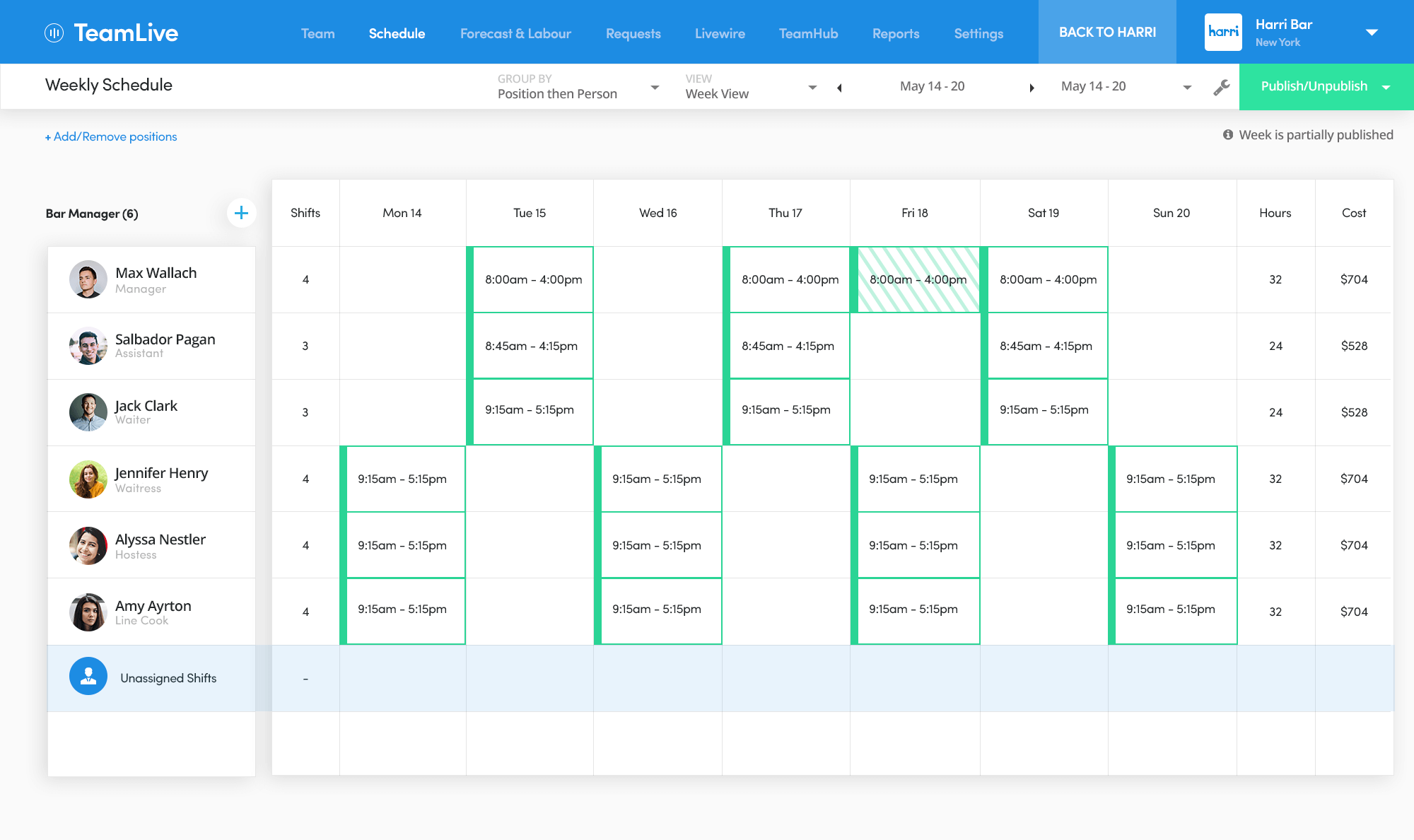
Creating a Positive and Supportive Work Environment
While hospitality employees can be driven by salary, money will never be the sole motivator. According to a recent report from Harri, “Getting Retention Right: Insights to Navigating Hospitality’s Top Talent Challenge“, what is important for employees is a company’s values.
41% of employees seek an honest employer. Moreover, mutual respect is sought by 34% of employees. Make an effort to communicate your company’s positive values including a willingness to support employees in more ways than a paycheck and you’ll gain a competitive advantage in the restaurant recruiting process. The word “supportive” in the context of labor amounts to subtle assistance, be it through benefits, flexible scheduling, team-oriented activities and more.
Career Advancement Opportunities: Pathways for Growth
The vast majority of employees are willing to accept positions that provide opportunities for growth. Make it crystal clear that the initial job offer has the potential to be a stepping stone to additional opportunities and you’ll find career-oriented individuals are interested in working for your business.
Opportunities to climb the ladder appeal to ambitious go-getters who genuinely want to work and advance the collective interest of your organization. Career advancement opportunities also decrease turnover, keeping those overachieving employees at your business for years or even longer.
When it comes to projecting the values and culture inherent to your brand during the recruitment process, keep in mind that you are being interviewed by candidates just as you are interviewing them. In other words, that match between role and employee must go both ways. Sell your company during interviews with coveted candidates by highlighting examples of those who joined the organization as entry-level hires then advanced to supervisory roles and higher. Such anecdotal examples are often enough to convince job-seekers to start at the bottom and gradually work their way upward.
Work-Life Balance in the Food Service Industry
There is a delicate balance to be achieved between one’s responsibilities at work and life at home. The restaurant industry especially is known for its high-intensity culture and long hours, often on evenings and weekends.
Companies that support employee work-life balance have a competitive advantage in both recruitment and retention. Create a work culture that emphasizes balance and self-care for all staff, front and back of house. Remember, that this begins with you and your management team modelling what this looks like! In addition, cross-training employees can help maintain consistency and ensure all staff members are easily able to take time off when needed without shortages in any area of operation.
Get creative in your attempts to balance employee work and life with flexible work schedules, paid time off and even a bit of workplace democracy. Such creative solutions will gradually lead to happier employees, better service and satisfied customers.

Effective Strategies for Attracting Skilled Food Service Professionals
Attracting difference-makers has never been more difficult. The pandemic drove many of the Boomer Generation and even some members of the Generation X age cohort to early retirement. Factor in the growth of white-collar tech jobs and there is all the more reason for hospitality businesses to perfect their strategies for filling food service jobs.
The best strategy for restaurant recruiting in 2024 and beyond is to focus on technology. Harri’s platform makes recruitment streamlining easy. Tap into the power of technological innovation, like multi-channel job broadcasting, customized applicant flows, and AI-powered candidate communication and you’ll succeed in attracting the top recruits.
The bottom line is people respond to incentives. Provide incentives to prospective hires, even if they are merely passively searching for a job and they will reciprocate the favor in the form of new hire referrals and hard work.
Harri helps enhance your company’s reputation within the community and also bolster brand visibility. We make it easy to connect with highly qualified candidates through many different job boards and channels. Check out our multi-channel job broadcasting technology for yourself and you’ll find it maximizes exposure to the most coveted job candidates.
Building a Strong Employer Brand in the Food Service Industry
Harri showcases companies in the best possible light. Our tech is the easiest way for any company, bring or small to bring the employer brand to life and help job seekers understand their core values and culture.
Though it might seem a bit counterintuitive, the pressure is now on businesses to sell the merits of their enterprise to job-seekers. Recognize the metaphorical tables have turned, respond accordingly with the use of Harri technology and you’ll succeed in attracting high-quality candidates to your workforce. In particular, our applicant tracking system makes food service hiring simple, ultimately benefiting your company and job-seekers alike.
Successful Talent Acquisition with Harri: Meeting the Needs of Today’s Workforce
In today’s dynamic and competitive food service industry, the key to successful talent acquisition lies in understanding and meeting the multifaceted needs of the workforce. In this article, we’ve underscored the importance of several critical factors – competitive pay and benefits, flexible scheduling, a positive and supportive work environment, career advancement opportunities, and work-life balance – in attracting and retaining top talent in restaurant and food service jobs.
The integration of Harri’s technology in talent acquisition strategies reflects a deeper understanding of what today’s workforce seeks. It’s not just about offering a job; it’s about creating an environment where employees feel valued, supported, and have the opportunity to grow. Harri’s platform facilitates this by enabling employers to showcase their brand effectively, connect with the right candidates, and build a strong employer brand that resonates with the aspirations of potential employees.
The future of talent acquisition in the food service industry hinges on the ability to adapt to the changing dynamics of the workforce. Employers who embrace this change and utilize platforms like Harri are well-positioned to attract, hire, and retain the skilled professionals who are essential to their success.
Try the Harri Demo for yourself and you’ll agree it has transformative power.










